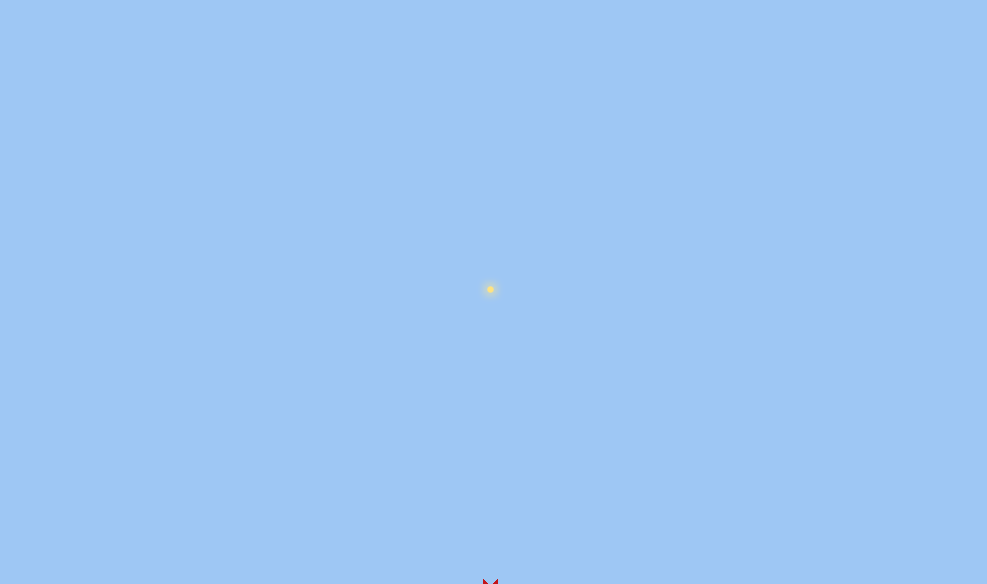
THE SUN'S SKYPATH
 K E E P S A F E ! It is never safe to look directly at the real Sun with the naked eye! Moreover, viewing it through a telescope, binoculars, camera or similar device without adequate safeguards—even for an instant —can cause permanent blindness! NEVER DO IT! Even during Solar Eclipses, when you'll surely be tempted! To learn how to safely "observe" the real Sun, consult the professionals at your local planetarium or observatory.
K E E P S A F E ! It is never safe to look directly at the real Sun with the naked eye! Moreover, viewing it through a telescope, binoculars, camera or similar device without adequate safeguards—even for an instant —can cause permanent blindness! NEVER DO IT! Even during Solar Eclipses, when you'll surely be tempted! To learn how to safely "observe" the real Sun, consult the professionals at your local planetarium or observatory.

A bit like a child's Slinky toy, to us here on Earth the path that the Sun appears to take through our skies in the course of a year is actually a "very shallow spiral"! Of course, on a daily basis the Sun always appears to traverse the sky predominantly westward, but in a year's time it also appears to move—though far more slowly and subtly— southward for six months then northward for six months, actually creating "a reciprocating spiral!" In fact . . .
. . . the Sun moves "due west" through our skies
at only two instants each year!—at the Solstices!
Charting the solar skypath starting at the June solstice, the Sun is over the Tropic of Cancer and winds south for half the year until it is over the Tropic of Capricorn (at the December solstice). Then it winds north, back to where
it began this journey, its combined westward and north-south motions having traced a spiral of 365¼ "coils" (close to half winding south, the balance winding north!) The separation between any two adjacent coils is greatest at the equinoxes, least at the solstices, but it is never very great. In fact, the Sun's north or south motion is always less than one solar diameter per day. How much of the solar spiral is visible, and the angle that its coils make with the eastern and western horizon, depend on an observer's latitude. The solar position on the spiral depends on the time of year and—as the Sun on average completes a full coil every 24 hours—the time of day.

From an equinox to a solstice the Sun's spiral has
about as many "coils" as a child's "Slinky" toy!
The solar spiral's northern half has
7½ more coils than its southern half!
Though we speak of "the Sun's motions", three motions of Earth are actually responsible for the solar skypath. These are Earth's spin on its axis, its motion in its elliptical orbit, and its varying tilt (relative to the Sun)—the last of these making the Sun appear above each hemisphere for six months at a time. However, because these three fac- tors are slightly "out of synch" with each other, the spiral that they produce is not quite symmetrical. The solar spiral's northern half has 7½ more coils than its southern half! This means that spring and summer in the Northern Hemisphere are each a few days longer than spring and summer in the Southern Hemisphere! In addition, the Sun makes 183½ coils while moving south, yet only 181¾ coils while moving north!
Taken together, spring and summer in the Northern Hemisphere are
over a week longer than spring and summer in the Southern Hemisphere!
The geometry of the rotating spherical Earth determines how the solar spiral is perceived. At the eastern and west- ern horizon the Sun rises and sets at an angle that is the complement of your latitude! Also, as it arcs across the sky, it can never climb higher than the complement of your latitude plus 23.44° (Earth's tilt relative to its orbit). And so, the Sun can only ever be seen "directly overhead" between the Tropic of Cancer and the Tropic of Capricorn! You can easily confirm this with the "tiltable-Earth" tool further below.

Illustrated below and nicknamed the "Sun's Signature" by astronomers, the solar analemma is a more subtle aspect of the Sun's skypath. You will find more information on this "figure-8 phenomenon" on our Earth: Day, Night and the Analemma page, but basically It is like a "composite snapshot" of the solar position, if taken at the same time every day of the year from the same location. As the Sun never returns to exactly the same position in the sky after 24 hours, the analemma reveals it to be a less accurate timekeeper than many persons believe. This is why the analemma is often a built-in correction on sundials. The "figure-8" nearly aligned with Earth's axis, its smaller lobe always points "essentially toward" the Celestial North Pole. This is confirmed below in the mini-views of Earth's surface, angled to show the orientations of the solar spiral and the analemma at their respective latitudes.
Observing the "almost" horizontal solar skypath at the poles, it is easy to see why they experience 6-month days and nights. At the North Pole on the March equinox, the Sun circles the sky—essentially on the horizon! Then it slowly spirals up for 3 months to its maximum altitude on the June Soltice, then down for 3 months back to the horizon on the September equinox. Having completed the North Pole's six months of daylight, the Sun then slowly spirals below the horizon, to be hidden for six months. Meanwhile, throughout the entire year the analemma has never risen or set! It circles the sky every day, its northern half always above the horizon, while its southern half, like the southern half of the solar spiral itself, is never visible at the North Pole!
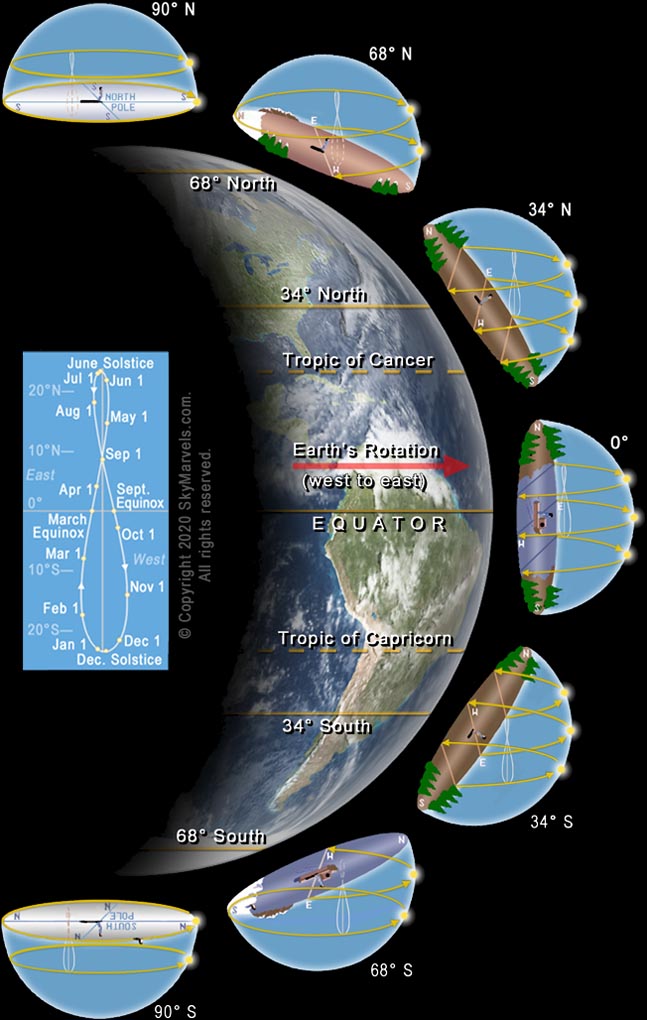
In the adjacent small views of the "non-polar" latitudes, the figure-8 is shown near sunrise, as close to due east as prac- tical without making the illustrations confusing. Even so, the analemma can always be seen "essentially upright"; that is, its smaller lobe points toward the Celestial North Pole. At 68° N, the angle the analemma makes when nearly due east hides much of it below the horizon. This produces sunrise and sunset times that are highly variable this far north.
In the view from 34° N it is easier to see how the analemma stretches north and south in the sky from the Celestial Tropic of Cancer to the Celestial Tropic of Capricorn. Morever, near sunrise or sunset the solar analemma makes an angle with the horizon that is nearly equal to your latitude!
At the Equator the Sun rises and sets more vertically than at any other latitude, taking only 2 min- utes to fully appear or disappear! Here day and night are close to equal, with sunrise and sunset times more regular than any- where else on Earth. As well, the analemma "lies nearly flat" at the Equator's sunrises and sunsets!
At sunrise and sunset in the Southern Hemisphere the smaller lobe of the solar analemma appears to "point down"into the horizon! But, just as it always does in the Northern Hemi- sphere, the analemma's smaller lobe is actually pointing essentially toward the Celestial North Pole.
Only in the Arctic and Antarctic Circles (66.56° N and S) can the Sun stay either visible or hidden for more than 24 hours at a time—and only at certain times of year. At 68° S, for example, (note penguin on the ice) the Sun stays completely above the horizon for about three weeks before and after the December Solstice, and below the horizon for a similar span of time before and after the June Solstice.
How long the half-degree-diameter solar disk requires to fully appear and disappear at the horizon increases with distance from the Equator. This is because the geometry of our spherical Earth, and additionally our planet's vary- ing tilt relative to the Sun throughout the year, make the Sun appear to rise and set "more shallowly" at less equa- torial latitudes. At the poles, which experience only one day and night per year, this becomes extreme. It is why the six-month polar days start and end with sunrises and sunsets so shallow that each lasts over 32 hours!
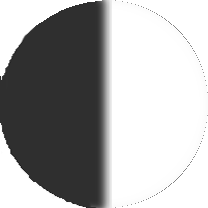
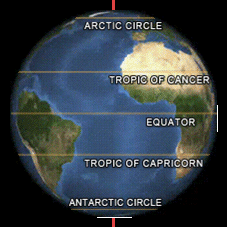
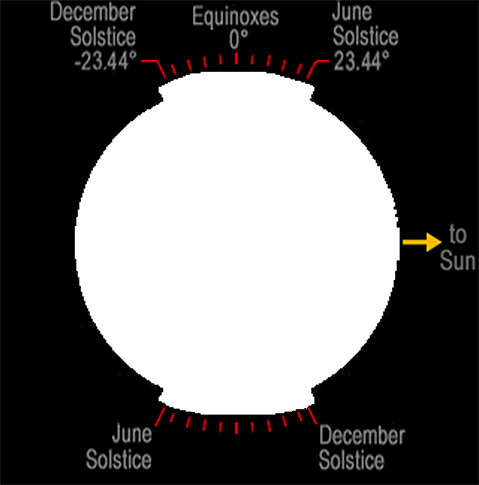
The following animations will help you visualize how Earth's tilt contributes to the spiraling solar sky path. Tilt our rotating Earth at left (shown like the large image of it above, i.e. with the Sun off to the right) to show our planet's orientation relative to the Sun at different times of year. You'll confirm that the Sun is directly over the Tropic of Cancer at the June Sostice, over the Equator
at both equinoxes (March and September), and over the Tropic of Capricorn at the December Solstice. And don't forget to compare these to Earth's Current Tilt.
Each year, as Earth progresses in its orbit, it completes one cycle of its back-and-forth, wobbling dance relative to the Sun, which results in our parent star's northward and southward apparent migrations over the tropics. At the same time, the orientation of our global shadow is constantly changing, its limits at the solstices defining the Arctic and Antarctic Circles. Look for this too as you vary Earth's tilt with the slider. These same motions of our planet (relative to the Sun) of course give rise to
our seasons, because they cause the Northern and Southern Hemispheres to receive unequal amounts of direct sunlight at different times of year! This inequality greatest at the solstices, Earth's hemispheres receive equal illumination only at the instants of the equinoxes!
In astronomy an observer's vantage point must be understood when viewing any object or event. So, in the rota- tion animation just above, it is important to realize that, when you alter Earth's tilt with the slider, you are actually seeing our planet in different parts of its orbit! And in different parts of its orbit, Earth moves at different speeds! The animation below helps explain this. First, reminding us that the Sun's skypath is actually a result of Earth's motions in its year-long orbit, it reveals when Earth is moving faster or slower in its orbit.
From perihelion to aphelion, Earth's orbital velocity is continually decreasing!
From aphelion to perihelion, it is continually increasing!
The animation below also confirms that the direction and angle of Earth's tilt stays essentially fixed relative to its orbit and the heavens, that Earth's changing tilt is relative "only to the Sun". This is true over the span of many human lifetimes. Also, by giving the durations of the seasons in both hemispheres, the animation helps us appre- ciate why the solar spiral has more "coils" over the Northern Hemisphere than over the Southern Hemisphere. It is simply because there are more days in the seasons when the Sun is north of the Equator!

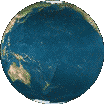




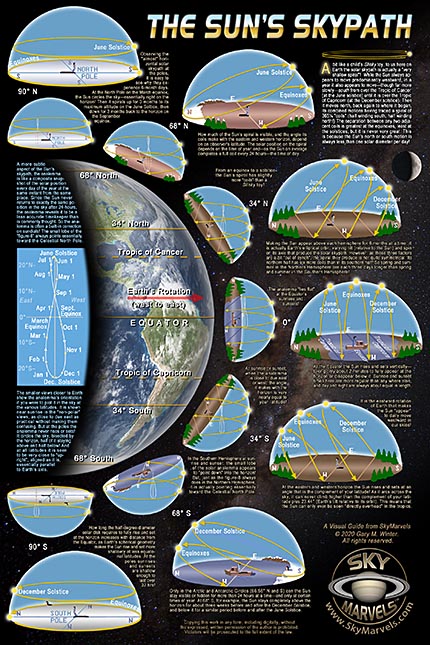 Why this is so becomes easy to understand when we examine the animation directly above. First, from the March equinox until the September equinox, that is, when Earth is in the "leftmost half" of its orbit in the animation, our planet's tilt makes the Sun appear north of the Equator in our skies. The opposite is true when Earth is in the "rightmost half" of its orbit. Moreover, our planet moves slower in the "leftmost half" of its orbit, because it passes through its aphelion not long after the June solstice. So it takes more time to com- plete that half of its orbit—over 7 1/2 days longer, in fact! In that time, of course, Earth spins an extra 7 1/2 times, which creates the 7 1/2 extra loops in the solar spiral's northern half!
Why this is so becomes easy to understand when we examine the animation directly above. First, from the March equinox until the September equinox, that is, when Earth is in the "leftmost half" of its orbit in the animation, our planet's tilt makes the Sun appear north of the Equator in our skies. The opposite is true when Earth is in the "rightmost half" of its orbit. Moreover, our planet moves slower in the "leftmost half" of its orbit, because it passes through its aphelion not long after the June solstice. So it takes more time to com- plete that half of its orbit—over 7 1/2 days longer, in fact! In that time, of course, Earth spins an extra 7 1/2 times, which creates the 7 1/2 extra loops in the solar spiral's northern half!
More and different illuminating perspectives, and more insights relating to Earth's daily and yearly motions which create the apparent solar spiral of the Sun's skypath, can be found on our Earth: Day, Night & the Analemma, Earth Tilt, Sunset & Sunset, "the Sun's Signature" and Equinoxes, Solstices & the Sun's Apparent Motion pages.
Advanced sky enthusiasts will also want to check out these four absolutely awesome online interactive appli- cations that allow you to generate, examine and chart many elements of the Sun's skypath and analemma: PD: 2D SunPath, PD: 3D SunPath, PD: Earth/Sun and PD: Sun-Path Map. They are amazing!
AND DON'T FORGET—to allow you to further enjoy this intriguing sky topic, and share it with friends, this page has been condensed into the beautiful Sun's Skypath poster, available as another Sky-Gift from SkyMarvels.
Of course, all of the descriptions above have dealt with how the Sun appears to move through our "earthly" skies, the dome of the heavens that "caps" our view from our planet's surface. However, as you surely know by now, and as the animation below demonstrates, throughout the year the Sun also appears to move—relative to the celestial background of stars—very slowly (about one degree per day) predominantly eastward. You may click on the animation below for more information about this solar motion.
Home Intro News Gallery Sky-Gifts Bonuses Tips
Learning Ctr Help Links Credits Legal Contact Us
© 2007-
by Gary M. Winter. All rights reserved.
Interested in political cartoons and humor?
Check out The HIPPLOMATS™.
SkyMarvels, Sky Marvels, SkyMarvels.com, SkyMarvels, Sky Marvels, SkyMarvels.com, THE SUN'S SKYPATH, PATH OF THE SUN, SUN'S PATH IN THE SKY, SUN'S MOTION THROUGH SKY, SUN'S SPIRAL, YEARLY SOLAR SPIRAL, Sun's Apparent Motion through the Sky, Sun's Analemma, Solar Analemma, The Sun's Signature, Solar Signature, Sun's Figure-8, Figure-8 of the Analemma, celestia4all, celestiaforall, CELESTIA, astronomy, space, simulations, animations, downloadable astronomy posters, stars, planets, Inner Planets, Outer Planets, Inferior Planets, Superior Planets, moons, asteroids, comets, Oort Cloud, galaxy, galaxies, Milky Way, Andromeda, globular clusters, binaries, quasars, black holes, supermassive black holes, telescope, telescopes, planetarium, software, freestuff, satellites, add-ons, addons, scripts, eclipses, Solar Eclipses, Lunar Eclipses, Solar Eclipse Finder, Lunar Eclipse Finder, mutual eclipses, transits, occultations, Solar System, CELES-TOOLS, celeSTARrium, CELX, CELX programming, Freebies, multiple views, atronomical unit, light year, parsec, meteors, meteor showers, Perseids, Geminids, Leonids, barycenter, time, Time Zones, tides, alignments, conjunctions, oppositions, seasons, apogees, perigees, aphelion, perihelion, Earth, Luna, Mercury, Venus, Mars, Jupiter, Galilean Moons, Io, Europa, Ganymede, Callisto, Saturn, Titan, rings, Uranus, Neptune, Triton, E-MSpectrum, electromagnetic spectrum, astronaut, equinoxes, solstices, precession, rotation, spin, inclination, tilt, Ecliptic, orbits, ellipse, parabola, hyperbola



